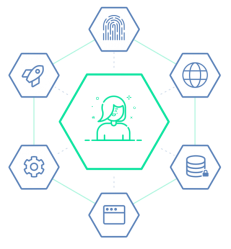SOLID Promises A New Approach To How The Web Works
As it stands on the modern Internet, your data is no longer your own. Your emails, photos, and posts all live on servers owned by large corporations. Their policies give them access to your data, which is mined to generate advertising revenue. And if you want your data back, there are innumerable hoops to jump through. Want it deleted entirely? Good luck.

Sir Tim Berners-Lee, as the original creator of what became the Web, has drawn issue with the current state of play. To move the ball on the issue, he’s been working on a design for decentralized internet and the efforts have led to the establishment of the Solid project. The goal is to rectify online privacy and ownership issues and give users greater control over their personal data.
The big question is how do you do that? When SOLID was announced last year there were few if any details on the approach taken by the program. But since then, more details have surface and you can even take an early version of the program for a spin. Let’s take a look.
It’s All In The PODS
Solid is all about PODS – personal online data stores. The concept is simple. An individual has a pod in which all their personal data is stored. This can be hosted at home, or with an external provider, but the point is that you choose and control where your data is hosted. PODS are intended to be portable; you’re free to switch providers or self-host at any time.

On the internet as we know it today, a user uploads data to each service they use. By and large, this data is trapped. Everything you upload to Facebook lives in one silo, while everything you upload to Twitter lives in another. Solid seeks to change this, where instead of uploading data to remote services, the services are granted permission to access the data that lives in one of your PODS.
The overarching aim is to eliminate the hold that large corporations have over user data, and the negative consequences that come of this. The system is designed to safeguard against things like the Cambridge Analytica scandal, where millions of Facebook users had their data exploited for political purposes. Instead, the company would have to manually ask individual users for access to their PODS to achieve the same goal, without being able to operate in secret.
Pros and Cons
The goal of giving users the ultimate say over who access their data and how is a lofty and noble one. In practice however, there are several hurdles that must be overcome to achieve this. It will require major structural changes to the way we all go about our day to day business on the Web.
One of the main issues is data security. In the Solid model, a social media company would access data on users’ PODS, rather than storing it on their own servers. In an ideal world, this would limit them from mining user data (for targeted advertising, etc.) and go a long way to stop the data being accessed for malicious purposes. However, if a company is given access to a user’s data at all, there’s little to stop the data being copied on to a remote server. From there, the data can be mined and manipulated at will.
Additionally, the Solid model may conflict with the very business model many web companies are built on. The average user enjoys a huge swathe of free content and services online. These are all paid with by users exchanging their personal data, which is used to sell targeted ads, covering the costs of delivering these services. If this is circumvented by users locking down their data, many services may have to switch to other methods of generating revenue.
This need not be a complete roadblock, however. The advertising industry was able to survive for years without granular targeting data, and users could always choose just how much of their data they’re willing to trade for service. Some may not be comfortable at all, while others may consider trading information on their age, location and purchase habits if it gets them a 6-month subscription to watch Friends. This opens up another con of the system: uninformed users giving up access to their PODS without understanding with whom they will be sharing their data.
Of course, a major benefit of such a system is having all your data in one place. Want your IoT-enabled air conditioner to click on at home when you’re on your way back from a workout? Give your home HVAC access to the fitness data in your pod and you’re set. Want a lower premium on your health insurance because you never buy unhealthy food and your government doesn’t supply public healthcare? Send your purchase data to your insurer! With all the data under the user’s control, there’s also the possibility of easily revoking access if one changes one’s mind.
Future of the Project
Obviously, remaking the Web to better serve users won’t happen overnight. Berners-Lee has taken a sabbatical from other work to focus on Solid, considering it of paramount importance. Additionally, the project has attracted top talent, with internationally renowed cryptography expert Bruce Schneier lending his skills to Inrupt, an open source startup founded to push the project forward.
Resources are already available for developers keen to dive into the new ecosystem. Whether or not Solid can take the Web by storm and usher in a new golden age of privacy and interoperability remains to be seen. We look forward to seeing what progress the project makes, and how it can change things for the better.
from Hackaday https://ift.tt/2ydikAq
Comments
Post a Comment